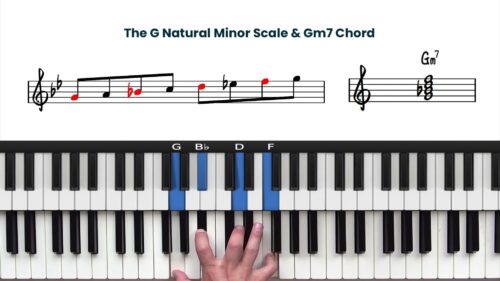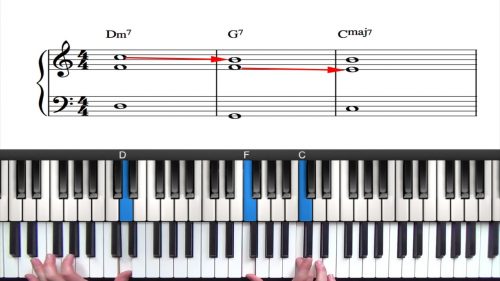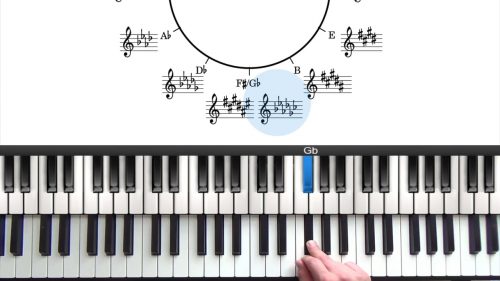251 Progression with 3-Note Voicings
In this lesson we introduce the concept of whole-step 251 drills and how they can be an interesting alternative to drilling chord progressions around the circle of fifths.
We then explore the most basic of all whole-step 251 drills which sets the foundations for applying more advanced jazz theory and techniques.
Type A & Type B
This drill can be played with both ‘Type A’ and ‘Type B’ voicings. We start with ‘Type A’ which is the easiest to visualise on the piano.
Voice Leading 7ths Dropping To 3rds
It’s important to understand that the voice leading is the same in both progressions; always 7ths dropping by half a step to the 3rd of the next chord.
Lesson Downloads
-
Whole Step 3-Note 251s – Type A File Type: pdf
-
Whole Step 3 Note 251s – Type B File Type: pdf
-
Whole Step 251 Practice Sequence File Type: pdf
-
iRealPro Practice Drills File Type: file
Practice Tips
-
This drill is the foundation for all other drills in the whole-step 251 progression course so spend the time to learn it thoroughly.
-
Ensure you can clearly visualise the 7ths dropping to 3rds in all 12 keys.
-
Use the PDF download files if necessary, but try not to become overly reliant on the notation.
- When playing these progressions, say the name of the progression and the chord names out loud or in your head. This will help you to internalise the chord names in each 251 progression.









Hi, Do I need to be remembering each and every detail about the progression names or would just memorising the movements be enough. I’m just not sure how deep I should be studying this .
Thanks
Pete
ps I’ve noticed a pattern in that the 2 is a 137 the 5 is a 173 and the 1 is also a 137 . I’m wondering if this is always the case .
Hi Pete,
Great question!
It’s important to memorise the chord symbols/chord names, and also the movements. The latter comes naturally with practice and by completing this drill every day.
For memorising the chord names/symbols of each 251, this is important for playing jazz standards so that you can quickly spot and identify these common progressions. The 251 is the most common progression in jazz music and virtually every jazz standard contains a 251 in some form, and so when you are familiar with the 251s you can quickly spot ‘chunks of related harmony’ in jazz standards which makes the process of finding suitable chord voicings much easier.
When completing each 251 in the drill, I recommend to say the name of the 251 and the name of the chord (either out loud or internally) … so for example for a 251 in C major you would say:
“251 in the key of C major”
“The 2 chord is D-7”
“The 5 chord is G7”
“The 1 chord is Cmaj7”
This way, you are building an mental association between the key, or the ‘home-base’ of the progression, which for the above example is C major, and also the related 2 and 5 chords which create the 251 progression.
You also asked:
“ps I’ve noticed a pattern in that the 2 is a 137 the 5 is a 173 and the 1 is also a 137 . I’m wondering if this is always the case”
Yes that is always the case in Type A. When we swap the order of the 3 and 7, we have Type B (which we cover in the 4th chapter) where the 3 and 7 is reversed so instead we would have:
2 is a 1-7-3, the 5 is a 1-3-7, and the 1 is also a 1-7-3
In both Type A and Type B, the 7th falls by a half step to the 3rd of the next chord, as so we are playing the exact same notes with the exact same movement between the chords, just the order of the notes in our right hand is reversed.
Complete this drill every day. Once you are comfortable with this drill, pick keys at random, and the goal is to visualise and find the 2 chord (where the progression starts) as quickly as possible. This is where the ‘movement memorisation’ kicks in, and you can let your muscle memory take over.
So to summarise, both are important, learning memorising the chord names/chord symbols, and also memorising the movements.
Please let me know if you have any further question on this.
Talk soon,
Hayden